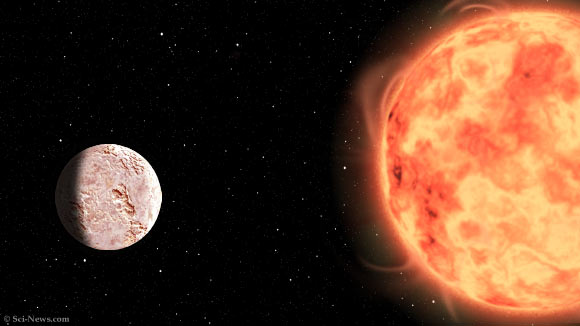Using data from NASA’s Transiting Exoplanet Survey Satellite (TESS) and multiple ground-based telescopes, astronomers have discovered an ultra-short-period exoplanet orbiting a red dwarf star called Gliese 1252.
Source: Sci News
Gliese 1252 is an M3-type dwarf star located approximately 67 light-years from Earth.
Also known as GJ 1252, TIC 370133522, TOI 1078, L 210-70 and LHS 492, the star has a mass 38% that of the Sun, a radius 39% that of the Sun, and an apparent magnitude of 12.2.
The newfound exoplanet orbits the host star once every 12.4 hours (0.52 days) at a distance of only 0.009 AU (astronomical units).
Designated Gliese 1252b, the planet is about 1.2 times bigger than Earth and 2.1 times more massive.
The alien world is extremely hot, with a surface temperature of 724 degrees Celsius (1,335 degrees Fahrenheit).
“Gliese 1252b joins a small but growing group of small planets orbiting nearby M dwarf stars,” said Dr. Avi Shporer from the Department of Physics and the Kavli Institute for Astrophysics and Space Research at MIT and colleagues.
“It also joins the group of small planets orbiting at very short periods, commonly called ultra-short periods. This orbital period ranges from about one day down to less than 10 hours, and even as short as 4 hours, especially around M dwarfs.”
“Planets in this group tend to be smaller than two times the size of the Earth, and are believed to have undergone photoevaporation which removed their atmosphere.”
Gliese 1252b was originally detected as a transiting planet candidate using data from the TESS spacecraft.
The astronomers confirmed the discovery using several telescopes of the Las Cumbres Observatory, the MEarth array at Cerro Tololo Inter-American Observatory, the HARPS instrument at ESO’s La Silla Observatory, and the NaCo instrument at ESO’s Paranal Observatory.
“We use TESS data, ground-based photometry and spectroscopy, Gaia astrometry, and high angular resolution imaging to show that the transit signal seen in the TESS data must originate from a transiting planet,” they explained.
“We do so by ruling out all false positive scenarios that attempt to explain the transit signal as originating from an eclipsing stellar binary.”
“The host star proximity, brightness, low stellar activity, and the system’s short orbital period make this planet an attractive target for detailed characterization,” they concluded.
The team’s paper will be published in a journal of the American Astronomical Society.
Source: Sci News

































Leave a Comment
You must be logged in to post a comment.